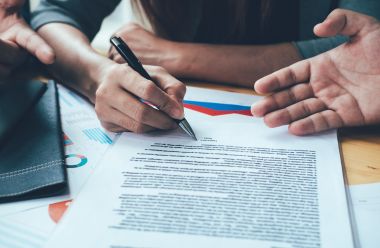With a deep understanding of your business alongside clear and honest communication, we help clients face challenges fearlessly.
Contact us today to learn more about our services and how we can help drive solutions.
UPDATE: How Can I Use My PPP Loan Proceeds?
June 18, 2020
Now that borrowers are receiving their Paycheck Protection Program (“PPP”) loan proceeds, many are asking how the proceeds can be spent. There are 6 main categories of how proceeds can be spent:
- Payroll Costs
- Mortgage Interest Payments
- Rent Payment
- Utility Payments
- Interest of any other debt obligations that were incurred before February 15, 2020
- Refinancing and Economic Injury Disaster Loan made between January 31, 2020, and April 3, 2020
For self-employed individuals, the proceeds of a PPP loan can only be used on rent and utilities expenses if such expenses were taken by the individual as deductions on their 2019 federal income tax return.
What are payroll costs?
Most of the above-listed items do not need further explanation, but the CARES Act and subsequently published guidance set out a specific definition and put certain limitations on what qualifies as payroll costs. Most importantly, the Small Business Administration has issued guidance indicating that at least 60%* OF PPP LOAN PROCEEDS MUST BE USED FOR PAYROLL COSTS. Payroll costs include amounts spent by borrowers on their employees (whose principal place of residence is in the US) for:
- Compensation, such as salary, wages, commissions, and tips, to employees, with such amounts capped at $100,000 annually, as prorated for the applicable period
- Vacation, parental, family, medical or sick leave
- Allowance for separation or dismissal
- Group health care coverage, including insurance premiums
- Retirement coverage
- State and local taxes assessed on the compensation of employees
Payroll costs also include compensation for independent contractors and self-employed individuals, such as wages, commissions, and net earnings from self-employment (which is called owner compensation replacement in the Interim Final Rule published on April 14, 2020). These amounts are limited to $100,000 annually, prorated for the applicable period
Payroll costs specifically do not include (i) taxes withheld or imposed under chapter 21 (FICA), 22 (Railroad Retirement Tax Act) and 24 (Collection of Income Tax at Course on Wages) of the Internal Revenue Code, (ii) compensation for employees who live outside the US, and (iii) qualified sick and family leave wages for which a tax credit is allowed under the Families First Coronavirus Relief Act.
We caution all borrowers that misuse of funds can lead to charges for fraud, and if a shareholder, member, or partner misuses funds, the nonrecourse provision of the CARES Act will no longer apply to such shareholder, member, or partner.
How does my use of funds affect loan forgiveness?
For an overview of the loan forgiveness aspect of the PPP, please read our article entitled “Please Forgive Me! Loan Deferment and Loan Forgiveness Under The Paycheck Protection Program”.
The use of the funds and the amount that can be forgiven are directly linked. As stated above, 60%* of proceeds have to be spent on eligible payroll costs, meaning the other 40% can be spent on expenses such as mortgage interest payments, rent or utilities; however, the amount of loan forgiveness is linked to the amount that is spent during the first 8 weeks after the funds are disbursed. For example, PPP loan proceeds can be spent on payroll costs until the loan proceeds are depleted (which may be over a course of several months), but the amount that will be forgiven will only be tied to the first 8-weeks after the proceeds are disbursed to the borrower. Also, to be included in the amount forgiven, the amount spent during the 8-week period after loan proceeds are disbursed on mortgage interest payments, rent, and utilities must be tied to a mortgage, lease, or utility service that was in effect prior to February 15, 2020.
One ambiguity that we hope will be clarified in the guidance we expect to be issued on or before April 27 relates to whether the payroll costs must be spent or the payroll costs must be incurred during the 8-week period after receipt of the proceeds of a PPP loan. For example, assume all employees make less than $100,000 per year, the proceeds of the PPP loan were received on April 8 and payroll is on the 15th and the 1st of each month. The question is whether the borrower would be able to apply toward forgiveness all of the payroll expense that was paid on the 15th or just the portion that accrued from April 8 through April 15? Without clarity from the SBA, the safe bet would be to include only that portion of the payroll that accrued after the loan proceeds were received. A similar question arises with respect to the first payroll in June (in this example where proceeds were received on April 8); would the borrower be able to include that portion of the payroll that accrued during the first several days of June (prior to the end of the 8-week period after loan proceeds were received) even though the payroll was “spent” on the 15th, which is after the 8-week period. We don’t know the answer. Without clarity on the subject, we may see borrowers having a special payroll period as of the end of the 8-week period following receipt of the loan proceeds.
* Prior to the enactment of the Flexibility Act on June 5, 2020, 75% of PPP loan proceeds were to be used on payroll costs; however, the 75% threshold has been reduced to 60%. For more information see our article discussing the Flexibility Act HERE.





